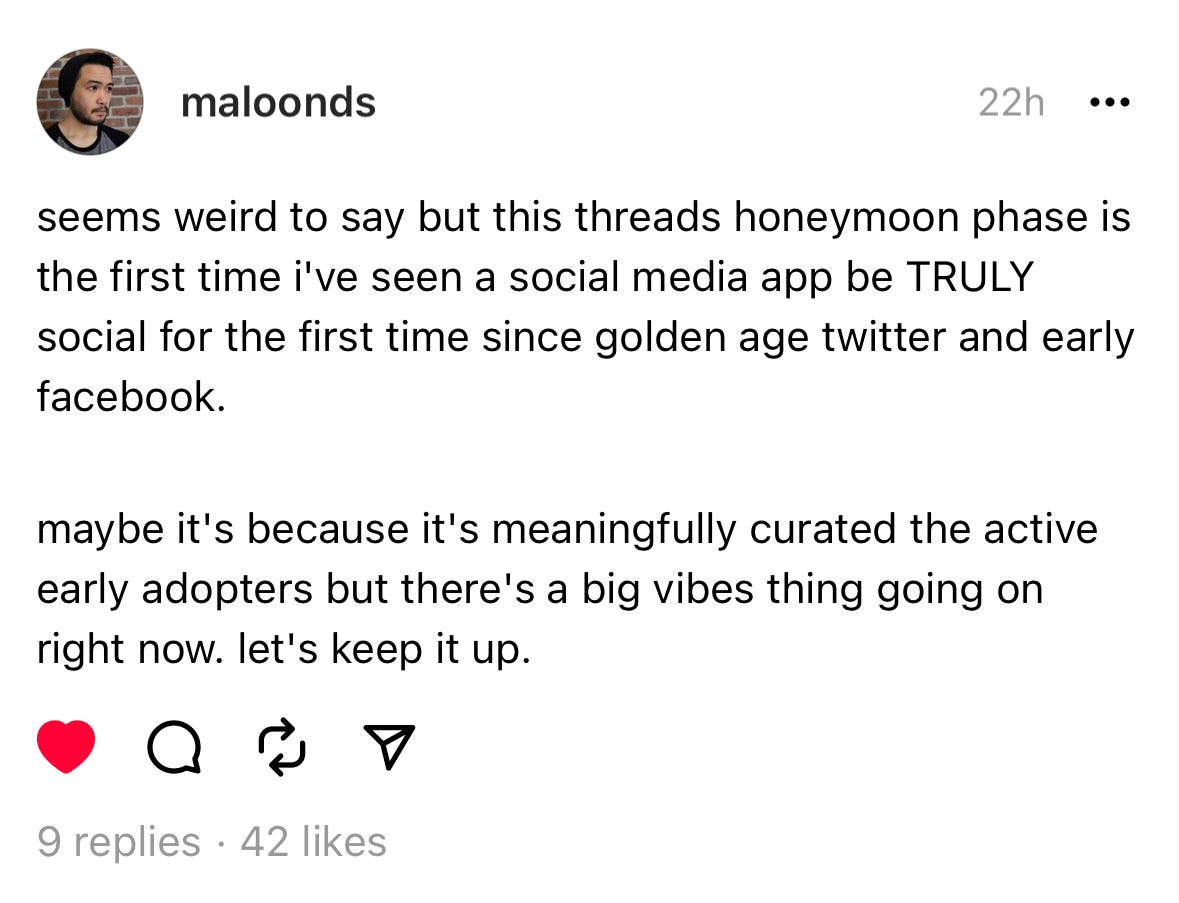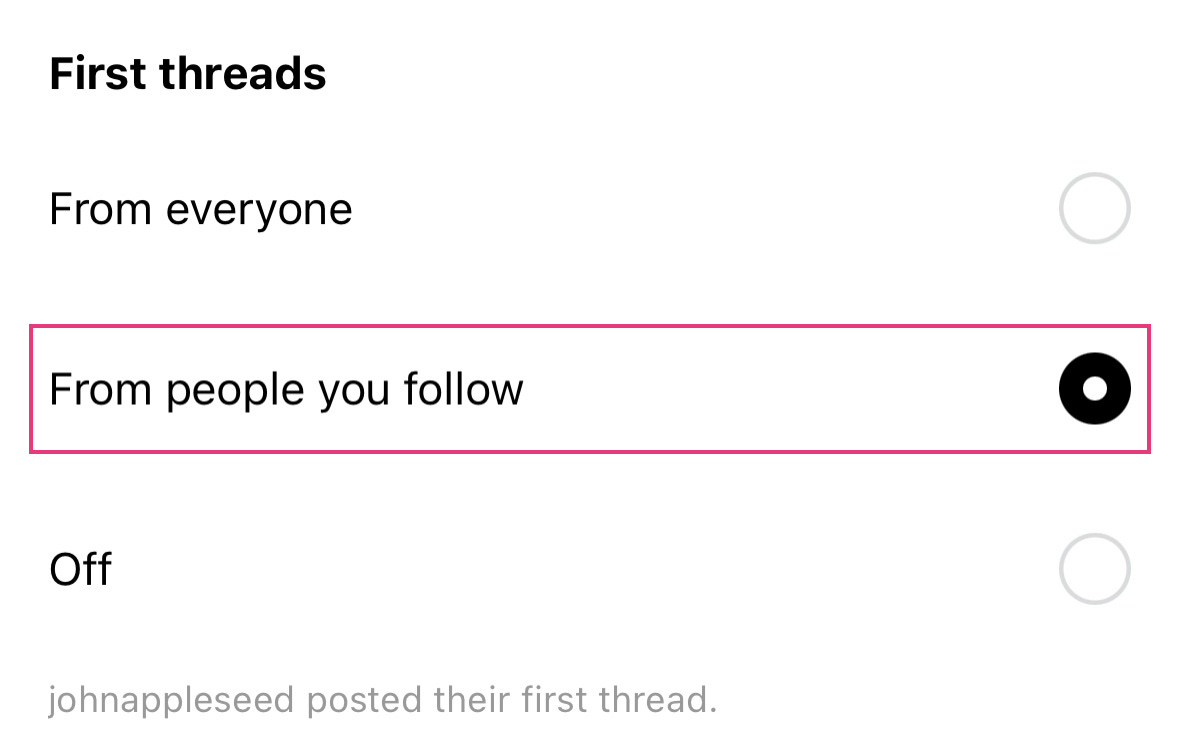
LinkedIn is the nice office space that I lease. I go several times per week. I have fun hallway conversations with the other tenants, eat some good snacks, and get some work done. It’s typically a pleasant experience. When I head home, I’m always glad I went.
Twitter is my home. I have family and friends over for dinner and sometimes I host parties. I also do my work there, sometimes not leaving my home office for days. I cook, read and watch TV. I go back and forth between spurts of productivity and laziness.
But Twitter hasn’t felt so homey lately. My closest friends stopped coming over. We still talk, but I miss our dinner parties. New neighbors moved in next door. We don’t have much in common and occasionally we’ll argue over minute details, like them wanting to mow my lawn a certain way. I’m not sure why they have such strong opinions about my lawn when they rarely mow theirs. But it’s easier to keep the peace, so I nod in lukewarm agreement and look away.
Then a few days ago, a new neighborhood opened up just down the street. The houses were already built for us. All we had to do was pick up our keys and go inside. Some of my friends grabbed their keys, and so did a bunch of new people. We didn’t know each other, but it seemed like we would have a lot in common. Frankly, we were just excited to start decorating our homes. We commiserated over the HOA in our previous neighborhood. We exchanged pleasantries, shared our interior design advice, and had a block party every night since.
That’s what Threads’ launch week has felt like. Brand new homes for everybody in a safe neighborhood — or at least, a neighborhood we already knew.
When was the first time a social network appeared overnight?
This is the first time we’ve seen a social network spring up overnight. The first time most of us (save for the celebrities and influencers) got to experience the first few days on the same proficiency level, starting from scratch, defining the community culture together. All while the network achieved critical mass.
Consider this:
Within two years: MySpace had 22 million users. Facebook had 12 million users. Instagram had 27 million users.
It took LinkedIn five years to grow to 13 million users.
In six years: Twitter grew to 140 million users. Snapchat got to 160 million users. TikTok has over 150 million users.
As for Threads? 30 million users in less than 16 hours. As I type this, Threads has more than 70 million users and there’s a non-trivial chance it will grow to 100 million users before the weekend officially kicks off. Two days after launch.
Threads’ obvious competitive advantage is the 2-billion strong Instagram user base. Still, this is unprecedented growth.
It’s easy to be on Threads.
But it’s not just that so many of our friends are already on Threads. By and large, so far people are just… nicer. After all, we’re all a bunch of displaced nerds looking for our new home. And it’s easy to be here.
Why is this?
Alternative to Twitter. The obvious reason is that many of us are running away from common enemies (you know, the weird HOA and those lawn-obsessed neighbors).
Access for all in 100 countries. No wait lists to gamify or invite codes to hunt down (sorry Bluesky). And no atrocious wait time for Android users (looking at you, Clubhouse). As long as you have an Instagram account, you’re in. (To my EU friends, I am sorry.)
People with accountability, and fewer bots. Threads is built on open protocol ActivityPub, using Instagram account credentials. And Instagram isn’t exactly the kind of social channel where you create an alt just to lurk and troll. Most of us use our real identities, interacting with our friends and family. Plus, Instagram’s visual nature makes it easier for Meta to analyze images for bot-generated content.
Equitable skill level. If you joined Threads this week, you didn’t walk into a years-long cocktail party, left to figure out the social etiquette alone. We were all dropped into the empty ballroom, at the same time, with the same tools. No one user is better versed in the algorithm than the next person.
The result? It’s the first Twitter clone with critical mass that offers value realization as soon as you open the feed. For as much as I wanted to enjoy platforms like Mastodon and Bluesky, finding my desired people, topics and content was really hard. I struggled to find reasons to keep coming back to Mastodon, especially when I could find everyone on the other platforms I was already using. Meanwhile, my first impression of Bluesky was that it’s another avenue for journalists to bully each other which certainly isn’t a value proposition for me. (As I type this, I don’t follow enough people on Bluesky in order for it to populate content in my feed… but I can’t search for people to follow because I don’t know who to look for and it won’t suggest anybody for me... and instead of searchable topics, all that’s available is a “What’s Hot” feed filled with meme content.)
Threads just feels so… alive. Meta privacy concerns aside (and I don’t say that dismissively, but rather, putting that aside for the moment), the current culture on Threads is a special point in time and it’s hard to not want to preserve this feeling. I’m not alone. I couldn’t have said it better than my friend Joe Malunda:
Maybe we can maintain the culture.
Ruthlessly curate your feed.
You know how LinkedIn and Twitter have become cesspools of broetry? Now’s our chance to start from scratch and nip that in the bud. If you don’t like it, don’t engage with it. Don’t even allow it into your feed. And actually, if you do like it, by all means, get more of that in your feed. Either way, the below advice should help you…
When you join Threads, you’ll immediately see that you don’t get a chronological feed. You get a hybrid feed, informed by some combination of high-engagement organic content, celebrity/influencer content (which at the moment feels best described as “high-TAM” — content with theoretical broad appeal to a mass audience), content from people you follow, and engaged-with content from those people.
You might not like this information glut. If that’s the case, head over to Settings > Notifications > Threads and replies > then under “First threads” change the toggle from “From everyone” to “From people you follow.”
You’ll still see content from people you don’t follow, but this should help reduce the noise. This was the case for my experience, but I anticipate the algorithm is constantly changing, so perhaps this won’t be true tomorrow.
Alternatively or additively, you can use this from-scratch opportunity to engage and not-engage ruthlessly. Like or comment on content you really want to see more of. Hide the posts that aren’t interesting. Mute accounts mercilessly. Besides, you can probably find those same people on Twitter. And if they’re a creator, chances are they’re cross-posting similar content anyway.
It’s also worth nothing that who you follow isn’t front and center the way it is on your Twitter profile. Users need to click on your Followers then go to your Following tab to find this. It’s two steps that most people are unlikely to take. To me, this means less pressure to follow people out of social obligation.
We don’t know (yet) how the algorithm works, but it’s not unreasonable to believe that engaging, hiding, muting, and not-following will help inform what’s being served to you.
Remember: this house is brand new, and it’s yours.
A chance for freshness
I don’t think I can prove this. I think you’d have to take my word for it. But one feeling that has been palpable is the appetite for freshness. We’re tired of the same hooks, and we’re tired of the rage-bait. Many of us come from displaced communities — Marketing Twitter, FinTwit, the creator economy, etc — wanting to replicate that sense of community we once had in the golden age of Twitter. But Twitter to Threads is not a one-for-one exchange, however similar they may be. And I’m skeptical anyone truly wants the same experience. We want to feel the same feelings of belonging and novelty.
So let’s deliver on that. Let’s foster that sense of camaraderie. Share our expertise, our opinions, our silly jokes. Give me your hot takes, your aburdist humor, and yes, your marketing insights. I still want that.
Just please don’t tell me that I’m part of that 99.5% that’s using Threads all wrong.
But is the new house really free?
I can’t speculate as to whether Threads will eventually kill Twitter. Predictions from company outsiders like myself aren’t useful anyway. That said, I do have a hunch that a significant portion of us 70 million+ people will continue to enjoy our new houses and neighborhood at least for the time being.
But let’s face it: this house isn’t free.
Just take a look at the data that Threads collects: Health info, financial info, browsing history, location, purchases, contacts, usage data, sensitive info, and more. Granted, this will likely result in more relevant ads served to you across the Meta ecosystem — which, depending on your view, can be a good or bad thing.
And then there’s the elephant in the room. We’ve run from one billionaire’s arms to the next. We’re enabling a tech behemoth’s hold on us instead of a competitive market. I don’t know that any of us feel truly good about this decision.
But damnit. Is it really too much to ask if we can enjoy this honeymoon phase? At least for now.
I’ll see you on Threads, where I’m hoping to keep things casual and fresh. (But, yeah, I’m also still around on LinkedIn, Mastodon, and Twitter.)
🌐 Further reading on Threads
Meta Launches Threads, And It’s Important For Reasons That Most People Won’t Care About - more on ActivityPub and its implications
The End of the Honest Internet - on what’s wrong with Twitter, why Threads will fail, and more.
First look at Threads - a description of the app’s key features on Daring Fireball
🎧 Recent marketing stuff unrelated to Threads
Everyone Hates Marketers podcast - I chatted with Louis Grenier about our obsession with algorithms, the false choice of high-quality vs. clickbait content, and learning to become an intuitive marketer.
B2B Better podcast - I recently joined Jason Bradwell’s show to talk about compelling B2B content. We covered ChatGPT, modern content marketing, and audience research.




Would push back on "equitable" - it's not, they publicly stated they invited celebs and influencers before you. Also it's a deck stacked in favor of existing Instagram users. Not a meritocracy, not an equal playing field
Well said all around, Amanda.